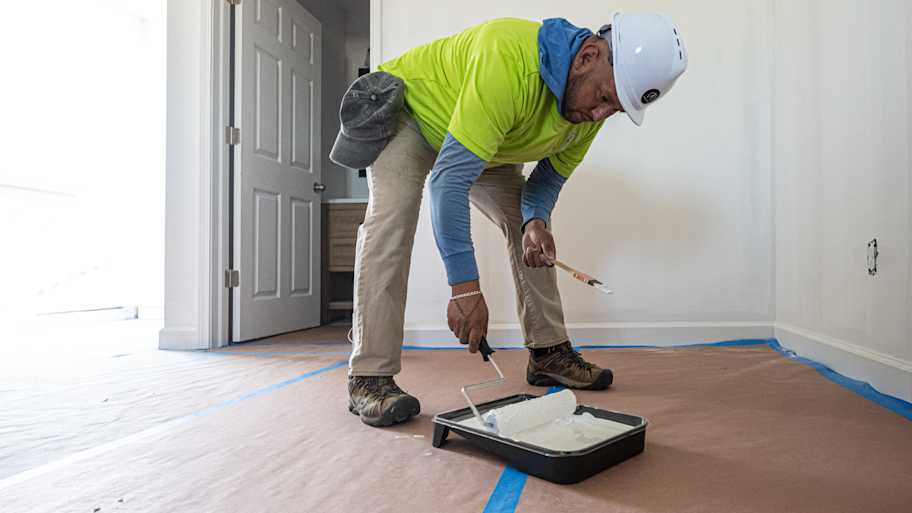Will My Paint Colors Look Different Than the Color Swatch?
Paint should look no different on your walls than it does on a color swatch if it's mixed and applied properly


There’s nothing quite like picking out that perfect interior paint color and seeing it come to life on the walls of your home. But it’s normal to wonder if that color swatch you love so much will look different once applied. Many factors can affect your paint project, from the type of finish you use to how well you mix the paint beforehand. Temperature changes have an impact on interior paint as well.
Learn if your paint color will look different from the swatch, or if it will become darker upon drying.
Does Paint Dry Darker or Lighter?
Paints typically dry darker, particularly oil, acrylic, and latex paints. However, that doesn't mean it will look different than what's on the paint swatch. If you mix the paint properly, it should look the same as the color you picked out once it dries. It can take paint up to eight hours to fully dry, so wait at least that long to be sure the paint has taken on its final appearance.
Unless someone paints the interior of your home with watercolors—and for those with small children, that's a distinct possibility—paint doesn't get lighter as it dries.
Follow these guidelines to ensure you mix your paint correctly:
Mix only interior paints and paints from the same brands.
Mix the paint thoroughly (it's best to use the mixers at the paint store to ensure it’s done well).
Test a small batch first.
What Factors Influence Paint Color as It Dries?
If you're worried that the deep maroon you chose will appear bright red on your walls, don't fret. As long as you've mixed it properly, give the walls enough paint coats, and allow ample time to dry, you should be happy with the result.
If it doesn't look like a perfect match, you either haven't let it fully dry, didn't give it enough coats, or someone made a mistake on mixing it, and that's what you should seek to correct.
Here are some additional factors that could impact the paint color’s appearance as it dries.
Finish
Different finishes have different appearances. Gloss finishes over large areas of an entire wall may look darker than you were expecting because that type of paint reflects light. A matte or eggshell finish typically will look closer to the swatch color you chose. Flat paints have a chalkier appearance and don't have the sheen of gloss. Pay special attention to the type of paint finish you choose to ensure the end result matches your chosen swatch.
Environment
Plants, pictures, furniture, and even surrounding walls can impact how a color looks. That's why it's a good idea to try a few samples on your wall first to ensure you create a cohesive color scheme before you spend the time and money on new paint.
Lighting
Natural light should dance off the paint’s surface, and it should feel smooth to the touch. Each room of the house should shine and complement each other. If the color doesn't quite look right, try to position light sources differently—that alone could affect the sheen and finish, particularly of dark colors.
Tip: When you visit the paint store, request color samples and consider testing them on your walls first before settling on a color. Be sure to paint the sample on different walls to see the undertones the sun brings out. You may find that the swatch color you loved isn’t your frontrunner at all.
Does Paint Get Darker With a Second Coat?
There's a reason why you should always use a second coat of paint on your surfaces, no matter the color: A second coat allows the paint to settle in and make your walls pop. Also, it will keep your walls from having noticeable dark streaks and roller marks.
As a result, yes, that second coat will darken and deepen the color a little bit, but the color you chose in the swatch book generally accounts for that.
Does Acrylic Paint Dry Darker or Lighter?
Acrylics darken as they dry, as opposed to a watercolor, which would lighten due to its high water content. As a result, when it’s wet, the paint may appear lighter than you were expecting. Once it dries, those deep hues should settle in.
How Do Temperature Differences Affect Paint Appearance?
Temperature has a big impact on paint. At lower temperatures, the paint thickens, and at higher temperatures, the paint may crease or warp. Paint only between 35 to 100 degrees Fahrenheit, and at low humidity. While this may not affect the color, it could result in unsightly paint chips, bubbles, and cracks, which may lead to peeling.
Consider Having a Professional Handle Your Paint Job
The bottom line is, if the color doesn’t look quite the same as the swatch color, it’s because the paint wasn’t mixed properly or applied correctly. Not too into DIY or don’t have the time? Hire an interior painter near you to ensure your paint project looks polished and professional. It generally costs $2 to $6 per square foot to hire a painter, whether it’s exterior or interior work.
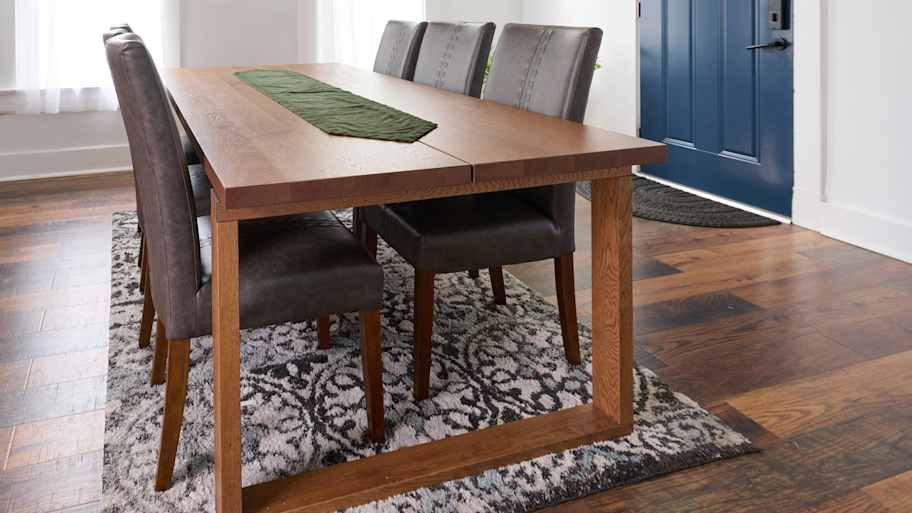

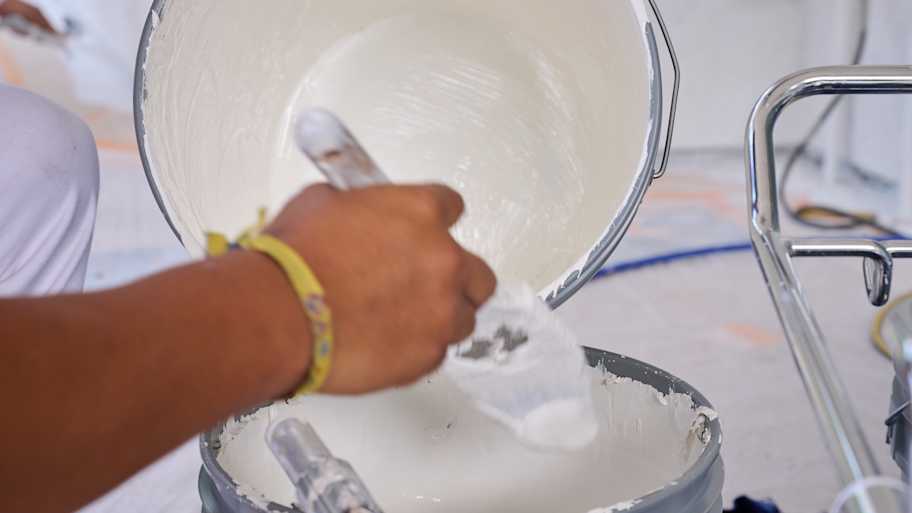
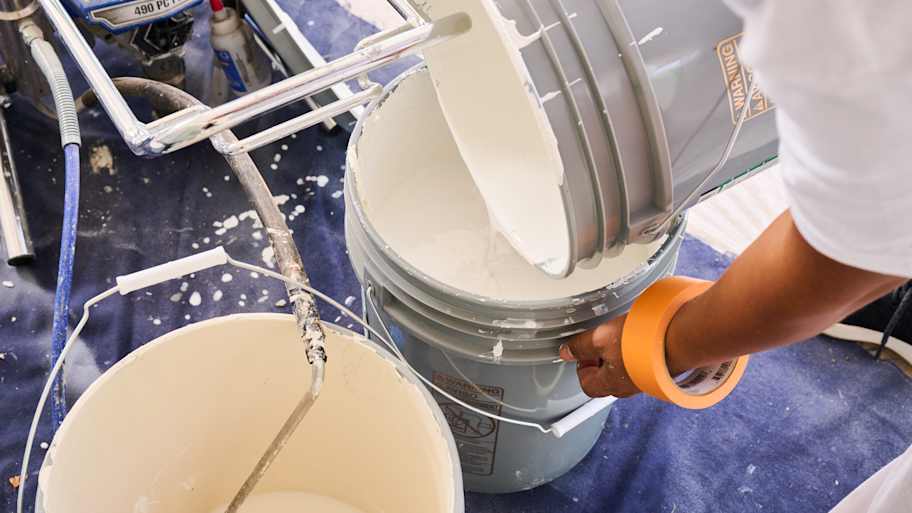
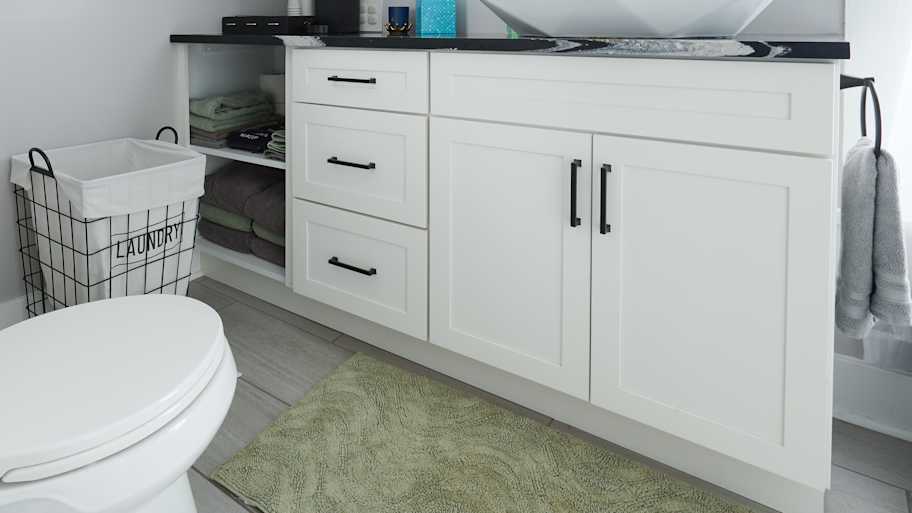
- 10 Common Painting Mistakes Homeowners Should Avoid
- How Long Does Paint Take to Dry?
- How Long Does Paint Last, and How Can You Tell If It’s Expired?
- 8 Simple Steps on How to Match Paint Color That’s Already on Your Walls
- How to Choose the Best Wall Color for Your Open Floor Plan
- How Long Should You Wait Between Coats of Paint?
- Types of Paint: Which Is Best for Your Project?
- What Is the Best Exterior Paint? Here Are the Top 6 Choices
- 11 Painting Tips and Techniques for Your Home Painting Project
- 8 Exterior House Painting Tips You Should Know



